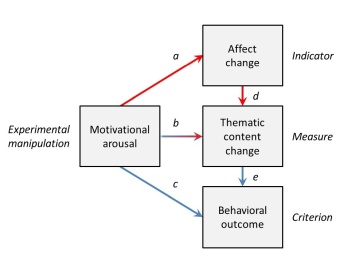Welcome to the website of the Human Motivation and Affective Neuroscience (HuMAN) laboratory! Research at the HuMAN Lab aims at providing a better
understanding of the physiological, cognitive, affective, and behavioral
aspects of motivation in humans. Our research has a strong emphasis
on nonconscious (i.e., implicit) motivational processes that occur and
influence behavior without the person becoming aware of them. We also explore
how implicit motives relate to and interact with people's
conscious goals and beliefs about their motivational needs.
The methods we use to explore these questions include non-declarative personality
assessment,
measurement of salivary hormone levels, assessment of basic
cognitive
functions, Pavlovian and instrumental conditioning, and brain
imaging. The HuMAN Lab
is supported by grants from the National
Science Foundation, the National
Institutes of Mental Health, and Deutsche Forschungsgemeinschaft.
To find out more, please use the navigation menu at the top of the page.
New picture-story measure of sexual motivation
|
Researchers at the HuMAN Lab have developed a new measure of sexual motivation that is based on content coding of picture stories. Hinzmann and colleagues (2023) and Schultheiss and colleagues (2023) have published two papers in Motivation Science in which they describe the development and validation of a measure that gauges a person’s current level of sexual motivation based on the imaginative stories the person writes about ambiguous pictures (e.g., a couple in bed engaged in a pillow fight). The new measure is valid in the sense that it responds sensitively to experimentally induced changes in sexual motivation, is associated with corresponding changes in subjective and physiological measures of affect, and predicts a behavioral criterion of sexual motivation (key-pressing for longer access to erotic images). Unlike many other measures of sexual motivation, it does not show a gender difference. The new measure of sexual motivation is based on a new approach of measure validation (see Figure 1) that builds on and extends earlier work by McClelland and colleagues....
[find out more...]
|

Figure 1. (Motive) measure validation model employed in Hinzmann et al (2023) and Schultheiss et al (2023). Source: https://osf.io/nz2fr/
|
|
Oliver C. Schultheiss (Friedrich-Alexander University) and Pranjal H. Mehta (University College, London) are the editors of the new Routledge International Handbook of Social Neuroendocrinology. The handbook is the first to bring together a broad variety of findings, topics, and perspectives emerging from the nascent field of social endocrinology. Featuring 39 chapters by author teams from the US, Canada, the UK, the Netherlands, Germany, Sweden, and Israel, it provides state-of-the-art accounts of research on dominance and aggression; social affiliation; reproduction and pair bonding (e.g., sexual behavior, sexual orientation, romantic relationships); pregnancy and parenting; stress and emotion; cognition and decision making; social development; and mental and physical health. |
 click for a bigger view click for a bigger view
|
The HuMAN-Lab provides research opportunities for foreign students interested in doing work that is closely related to the Lab’s mission. However, due to the requirements of the German university system, regular 3-year positions with a teaching load of 3 courses/year are only available to applicants with documented oral and written fluency in German. Applicants who can obtain a stipend (e.g., through the DAAD or funding agencies from their home country) are also welcome to apply. All applicants must have a master’s degree in psychology and must submit, along with documentation of their degrees, a curriculum vitae, a list of at least two individuals who can comment on their academic achievements, and a letter of intent that sketches out in 2 pages or less the specific research aims and interests of the candidate and how they fit the HuMAN Lab’s mission.
Last updated:
14 Dezember, 2023
|

